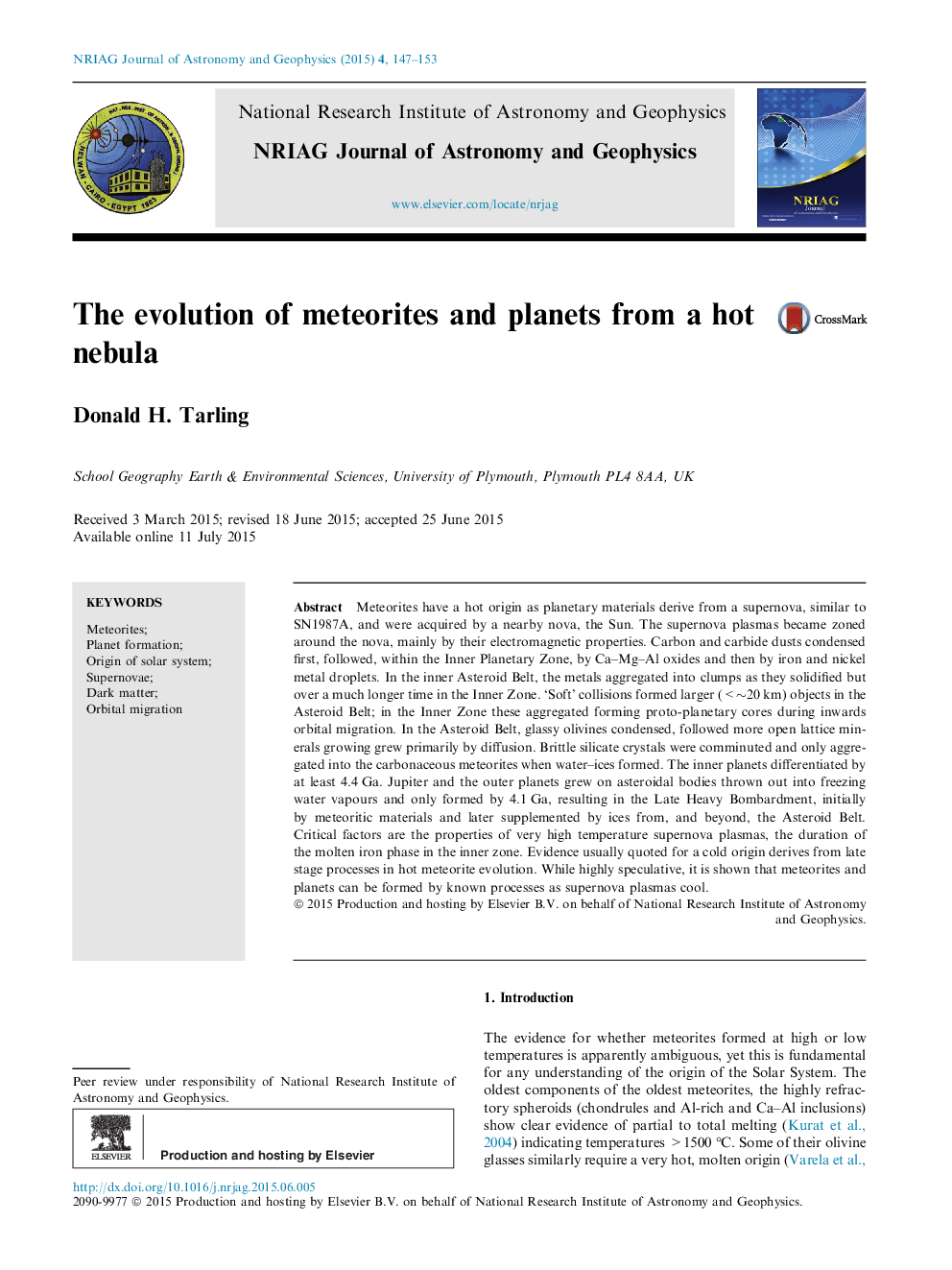| Article ID | Journal | Published Year | Pages | File Type |
|---|---|---|---|---|
| 1780606 | NRIAG Journal of Astronomy and Geophysics | 2015 | 7 Pages |
Meteorites have a hot origin as planetary materials derive from a supernova, similar to SN1987A, and were acquired by a nearby nova, the Sun. The supernova plasmas became zoned around the nova, mainly by their electromagnetic properties. Carbon and carbide dusts condensed first, followed, within the Inner Planetary Zone, by Ca–Mg–Al oxides and then by iron and nickel metal droplets. In the inner Asteroid Belt, the metals aggregated into clumps as they solidified but over a much longer time in the Inner Zone. ‘Soft’ collisions formed larger (<∼20 km) objects in the Asteroid Belt; in the Inner Zone these aggregated forming proto-planetary cores during inwards orbital migration. In the Asteroid Belt, glassy olivines condensed, followed more open lattice minerals growing grew primarily by diffusion. Brittle silicate crystals were comminuted and only aggregated into the carbonaceous meteorites when water–ices formed. The inner planets differentiated by at least 4.4 Ga. Jupiter and the outer planets grew on asteroidal bodies thrown out into freezing water vapours and only formed by 4.1 Ga, resulting in the Late Heavy Bombardment, initially by meteoritic materials and later supplemented by ices from, and beyond, the Asteroid Belt. Critical factors are the properties of very high temperature supernova plasmas, the duration of the molten iron phase in the inner zone. Evidence usually quoted for a cold origin derives from late stage processes in hot meteorite evolution. While highly speculative, it is shown that meteorites and planets can be formed by known processes as supernova plasmas cool.
